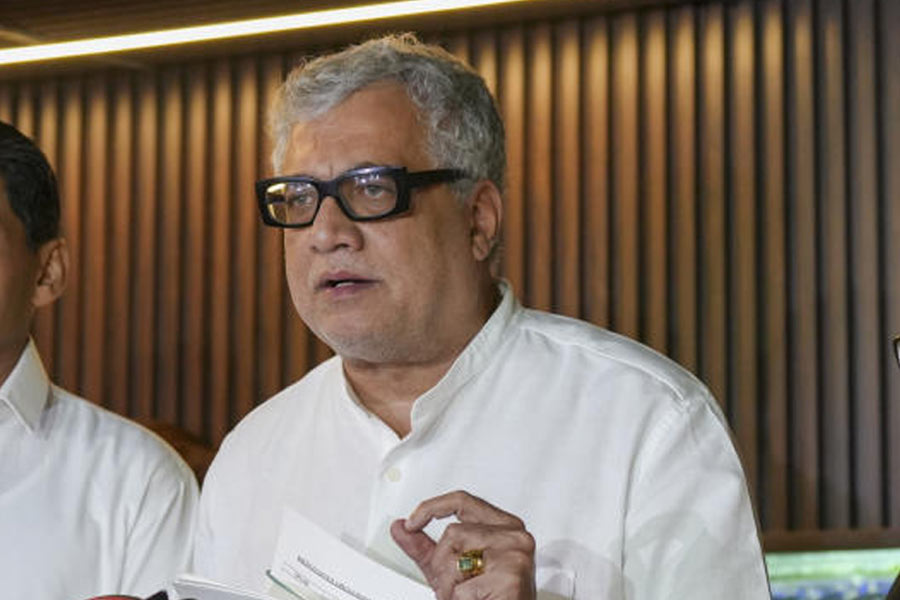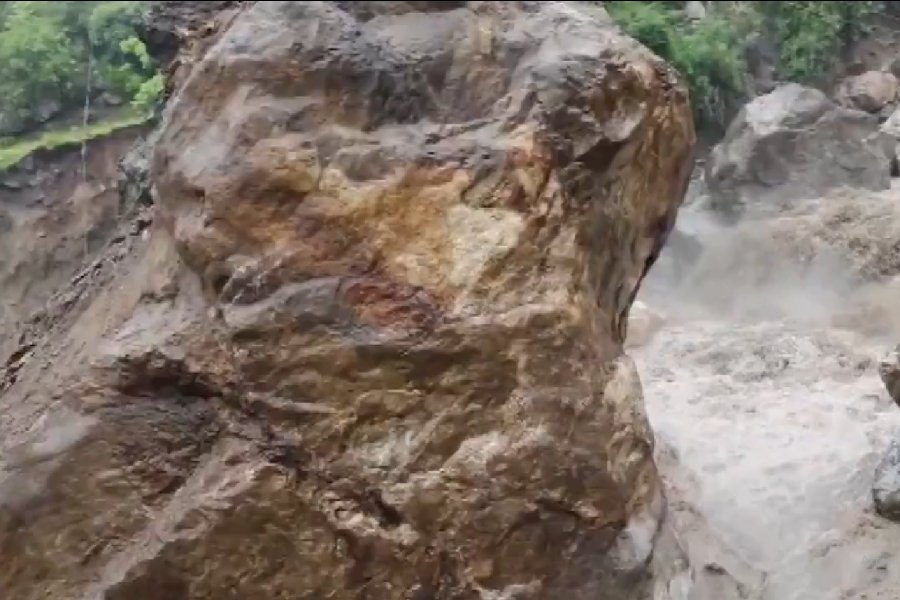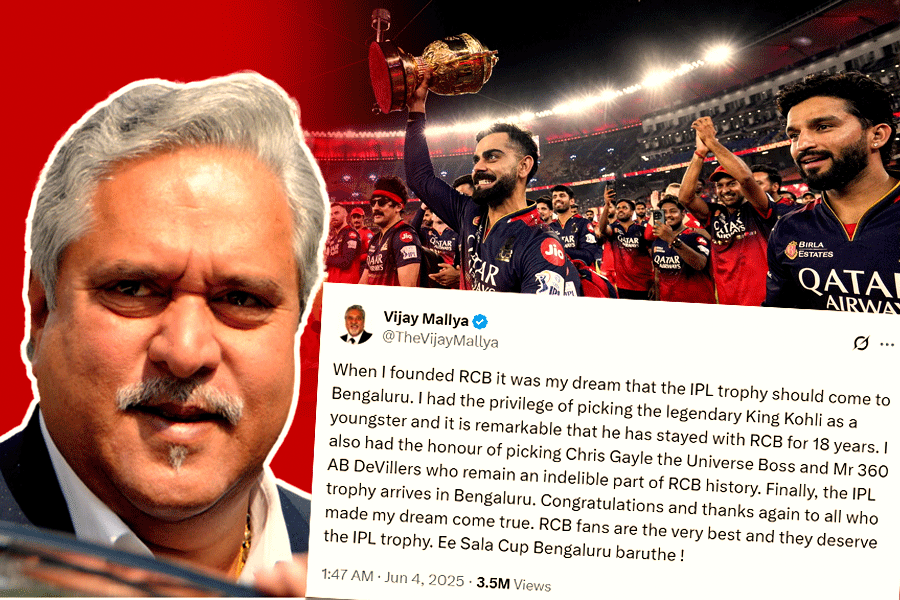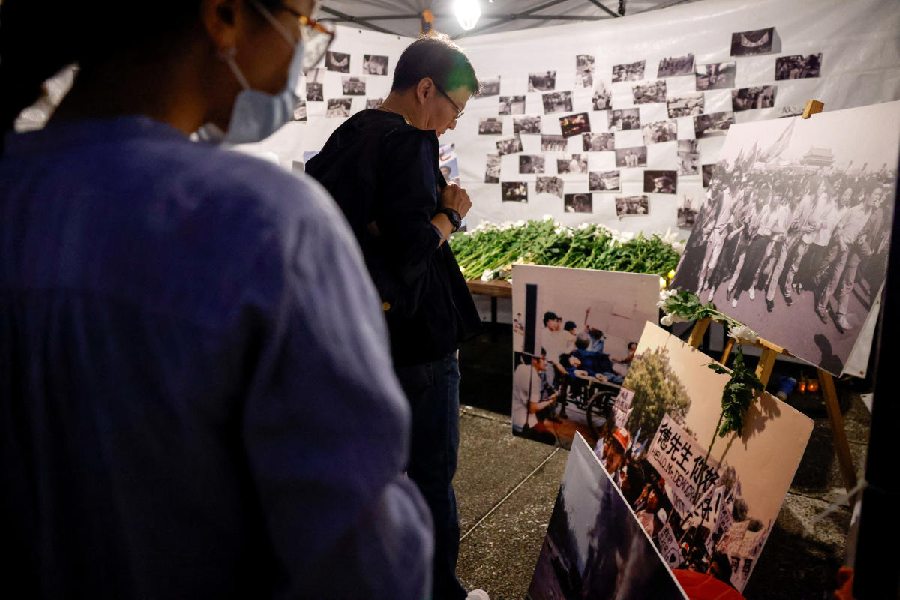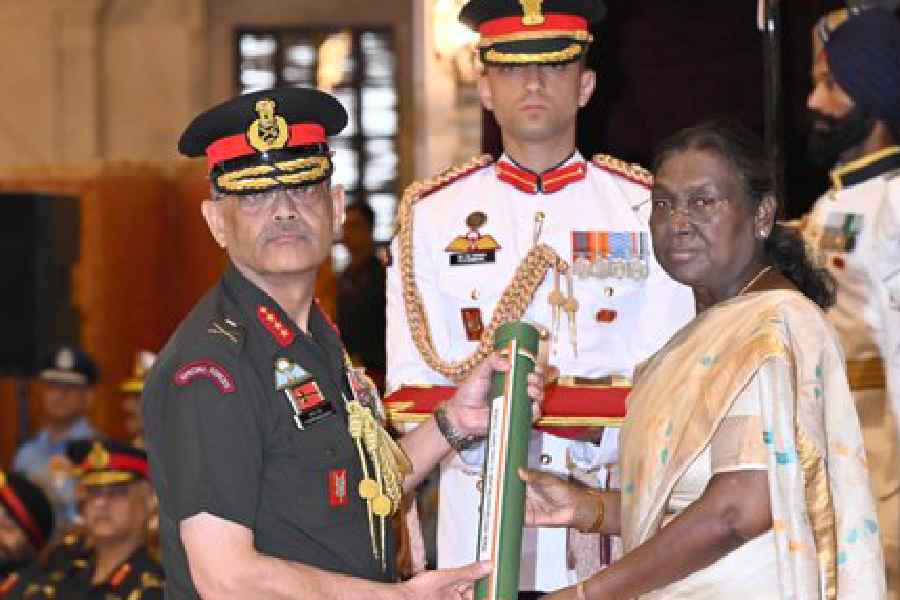 |
| Mutua Bahadur, preserving the traditions of Manipur |
Mutua Bahadur
Mutua Bahadur is always on the move. He has an office in Imphal, but rarely sits there. Dawn to dusk he travels, collecting rare artefacts. At night, he devotes his time to research work and documentation. If he is not on some trip, he is busy working in his museums. This has been going on for the past three and a half decades. One can meet Bahadur only in action.
Bahadur, 58, is synonymous with Manipuri culture. So far he has managed to collect more than 6,000 specimens of bamboo and cane work, jewellery, pottery, dolls, paintings, musical instruments, wood craft products, coins and stone inscriptions of the northeastern region, Myanmar and Bangladesh. He claimed to have possessed the largest private collection of gold, silver, bell-metal in the Northeast. His tireless work resulted in the opening of a cultural complex and a living museum.
The urge to do something to preserve the cultural and traditional items of the various tribal communities of Manipur was the driving force. “I think few contributions have been made by our intellectuals for Manipuri society. Priceless artefacts and treasures have been neglected for long. Moreover, Indian scholars, too, are ignoring our culture. If we don’t preserve them, the future generation will never know their cultural past. What I am trying to do is to construct a bridge between the past and the future. I am only preserving them. The analysis part is best left to the scholars,” Bahadur says.
And yes, Bahadur’s success in his works is phenomenal. In fact scholars visiting from outside the state describe him as a living encyclopaedia of Manipuri culture. He is an artist, author, social worker and cultural anthropologist all rolled into one.
The success is phenomenal because he hails from a poor and humble family. Born on January 20, 1948 at Imphal’s Keishampat, Mutum Leirak Bahadur started from scratch. He used to work as manual labourer to fund his “dream project”.
He recalls, “I used to paint roads, work as a porter and do all kinds of available jobs to finance my artefact-and-ancient-material collection trips. I went deep into the interiors of tribal villages and paid the owners handsomely to get possession of the treasures. You know, it will not be nice to hear what I did to gather fund for the project,” he says sheepishly.
Although Bahadur inherited the spirit of travel and adventure from his father, M. Ningthou, who was a Burmese soldier and a jeweller, it is the strong urge to keep the past alive that triggered the collection spree. Brought up in post-Independence era, Bahadur witnessed in the 1960s an erosion of culture and traditional values of most of the tribal communities, including Meiteis in Manipur. Naturally, there had been a cultural identity crisis among various tribes, with Western culture invading the state.
This was precisely the turning point in Bahadur’s life. “There was the threat of losing the originality of our culture and traditions in terms of values and materials. Besides, many questioned the originality of our materials. Hence, I decided to collect the artefacts, tools, utensils and coins for preservation. My first collections were diverse woven textile fabrics of different tribes. Then I set eyes on tribal artefacts,” he says. Initially trained as a fine artist, he was barely 20 when he started his project of setting up a museum.
The efforts bore fruit. By 1979 he opened what is today known as Mutua Museum at Keisampat. The museum is now used as his office, as all the exhibits have been shifted to a cultural complex, opened in 1993 at Andro village, where a sacred fire perpetually burns since ancient times.
About 26 km from Imphal, the Andro cultural complex is preserving and promoting the material heritage of the northeastern India.
Spread across 0.93 acre, the complex puts on display basketry, pottery, musical instruments, ornaments, sculptures, paintings, dolls and so on, covering the whole of Northeast. About 100 local orchids are also being preserved here. The collection at the complex includes 29 dolls, representing the recognised tribes of Manipur in traditional attire.
Traditional houses of different tribal communities, including Meitei House have been constructed here. “We used traditional materials and tools to construct them and also preserve them. All the headmen took part in the construction, which was done according to traditional rituals. This is not only to preserve the traditional forms of houses of the tribals but also to symbolise the fact that we are one and united. And we use smoke to preserve them,” Bahadur says.
He plans to convert the cultural complex into a composite village of south-east Asian countries.
The next feat achieved by Bahadur is a “living museum” in Purul village of Senapati district, where the two houses of the headmen of Purul Atongba and Purul Akupta are being preserved. Since its opening in October in 1990, Bahadur provides a monthly payment to headmen, K. Hekhani and S. Koni, to preserve the traditionally carved houses.
The headmen’s families are allowed to stay in the houses and encouraged to continue with their traditional living style. Bahadur signed a Memorandum of Understanding to preserve the houses. But his work is not always easy.
He has had to work as a servant to get hold of a “treasure”. But unhappy situations have not deterred him.
His work is not confined only to collecting cultural icons, but also includes published works. His prominent works include books on manuscript paintings of Manipur, tribal art, jewellery, cane and bamboo crafts, traditional textiles and tribal handwoven fabrics. Some of the books have been translated into Japanese.
He could not complete his graduation, but he is a visiting lecturer of Manipur University and lectures IAS probationers on tribal art and culture of Manipur.
Many awards have come his way. The state government has recommended him for the Unesco prize. The award is yet to come. Next year the Mutua Museum will celebrate its silver jubilee.


